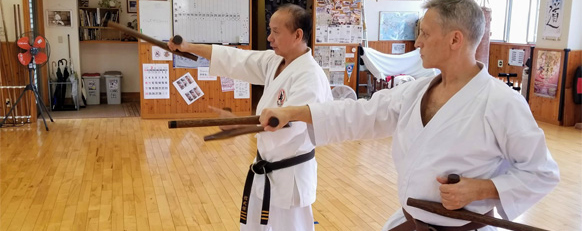KOBUDO TRAINING
We practice Traditional Kobudo weapons (Okinawan weapons) such as the Bo, Nunchaku, Sai, Kama & Tumfa. Kobudo training is often provided for higher level Karate students. Beyond self-defense training, these weapons are also used in martial arts weapon katas.
List of Traditional Kobudo Weapons we Practice
Bo (Staff):
The Bo (staff) is an Okinawan (Japan) martial arts weapon. This staff is a long wooden weapon traditionally made of oak and roughly 6 feet in length. In contrast, a Jo staff is approximately 4 feet in lengthMoreover, the Bo is used in many weapon katas and forms.
The Bo is used to block, thrust, and strike an opponent and is effective against most other forms of martial arts weapons. A typical Bojutsu technique will be to block an opponent’s attack with the top part of the staff and then in a fluid motion to counter strike with the lower end. In the hands of a master, there will only be a split second between block and strike. This is one of the reasons why the Bo is one of the most difficult of martial arts weapons to defend against.
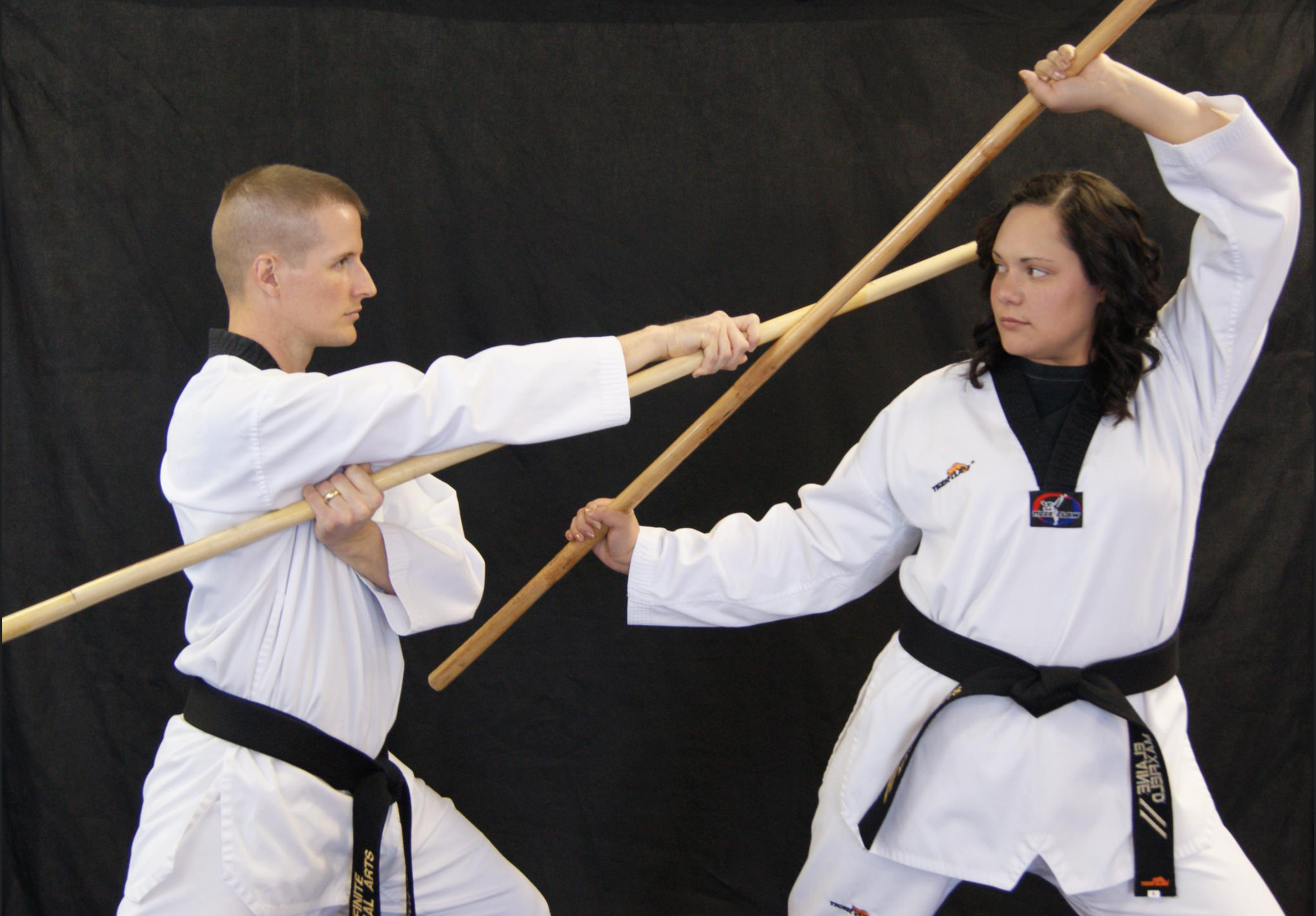
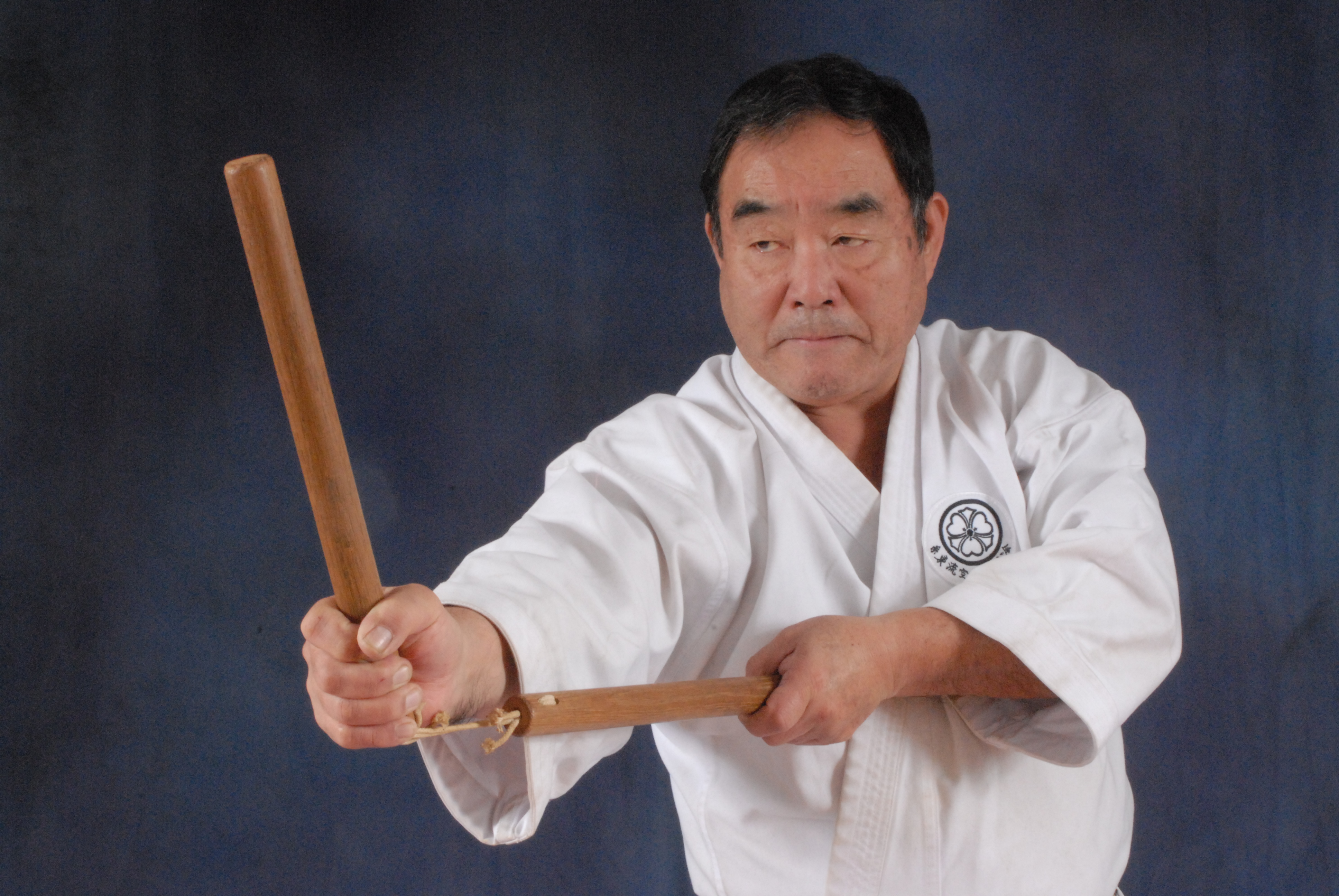
Nunchaku:
Nunchaku (or Nunchucks) is a traditional martial arts weapon from Okinawa, Japan. It consists of two short batons connected together by a chain or rope. History has it that Nunchaku were developed from farming tools used to thresh rice.
In traditional Japanese/Okinawan NunchakuJutsu, the Nunchaku is held towards the bottom of the weapon in order to take advantage of the weapons reach. The primary function of the Nunchaku is striking vulnerable target areas of the body (temple, wrists, elbows, knees etc). As well as strikes, the Nunchaku is also used to block and trap offensive maneuvers from oncoming attacks from other weapon wielding opponents.
The batons on Nunchaku are traditionally around 12 inches in length with around 4 inches of cord or chain connecting them. There are also 8 inch versions that have a slightly longer cord or chain but the overall length of the Nunchaku more or less remains the same. The batons on Nunchaku are usually round or octagonal. The octagonal variety have a much greater possibility of splitting the skin (both of the opponent or the handler… if you are not proficient with the weapon). It is highly advisable for all beginners of Nunchaku to use foam or safety Nunchaku because they are perhaps the most notorious weapon for self injury to beginners! However, with correct instruction and practice, the Nunchaku is a devastating weapon. No wonder, the Nunchaku is perhaps the most iconic martial arts weapon of all.
Kama:
The Kama is a martial arts weapon based on a farming instrument, the small scythe used for cutting rice. This weapon is used in a variety of Japanese, Filipino, Indonesian and Chinese martial arts styles.
In Okinawan/Japanese Kobudo, Kama are traditionally used in pairs. In basic forms, the Kama are held towards the bottom of the handle and are used to defend against opponents armed with swords or other long reach weapons such as Bo or Jo. A typical Kama technique will involve blocking an oncoming strike with one Kama then using the other to counterattack. Also both Kama can be used simultaneously to block or trap an opponent’s weapon or to deliver a double strike.
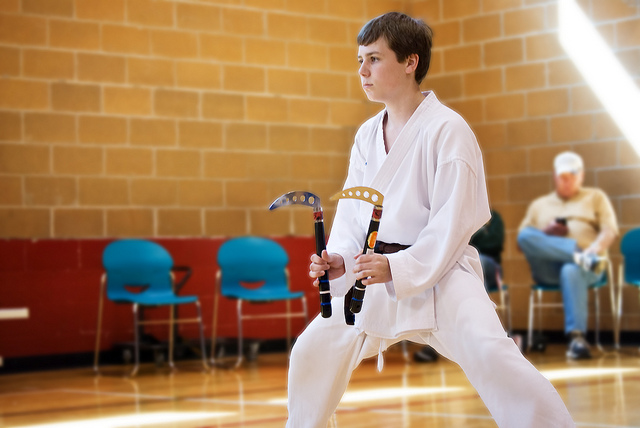
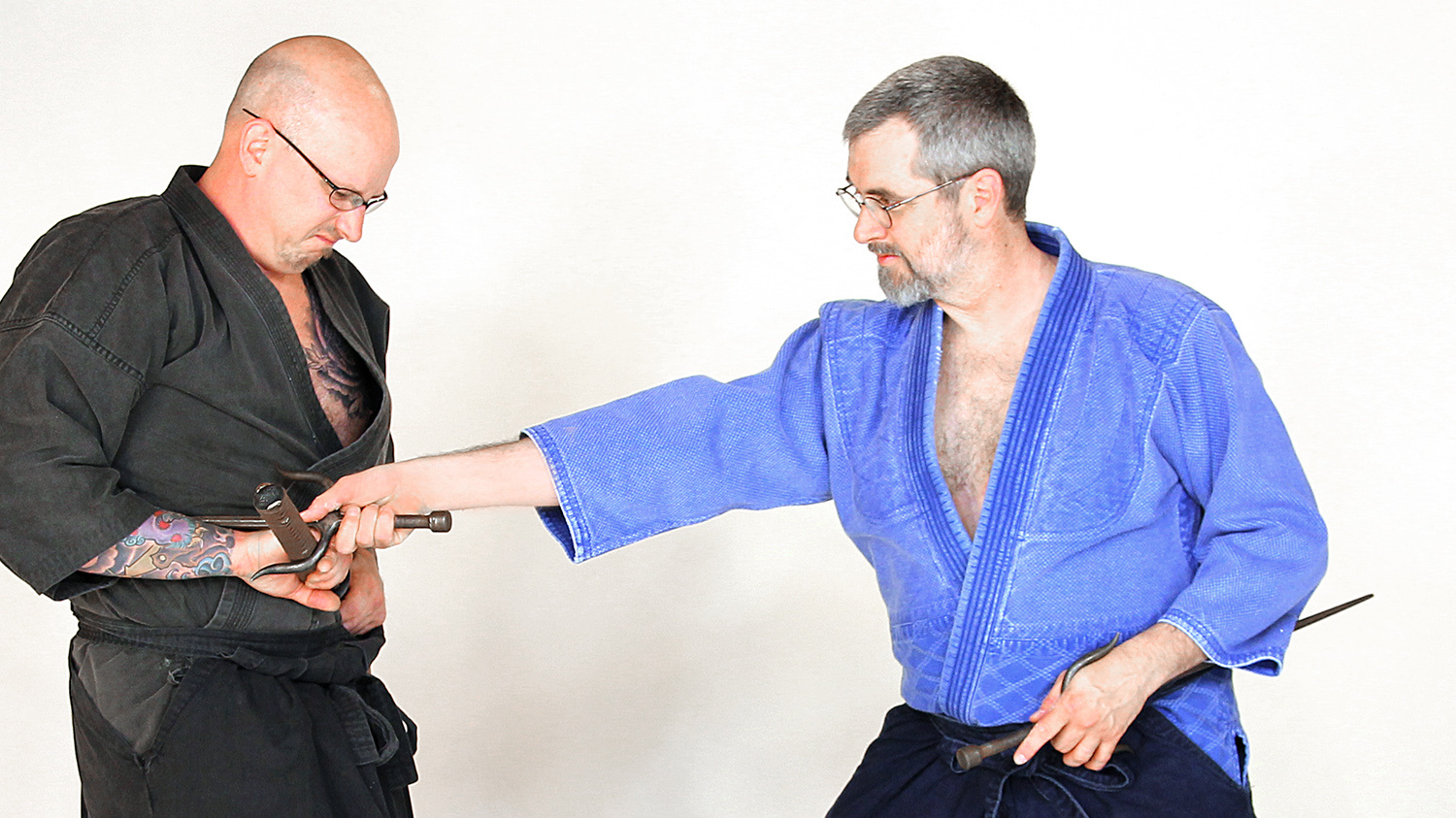
Sai:
The Sai is a three pronged martial arts weapon useful for trapping and blocking enemy attacks. As well as the blade, truncheon part of the Sai (the hilt) is also used in order to strike the opponent. The Sai was developed in Asia but is associated mainly with Japanese martial arts such as Karate and Okinawan Kobudo. Sai are used in many weapon katas and forms. In Okinawan/Japanese Kobudo, Sai are traditionally used in pairs.
Tonfa:
The Tonfa is a wooden baton-like weapon used in martial arts. It was developed in Okinawa, Japan. The Tonfa’s “extra” handle is the basis for modern police batons (versus the old stick-like batons). Tonfa are traditionally used in pairs and the basic principle of the weapon is to use them as an augmentation for the blocks and strikes used in Karate. Primarily due to the defensive capabilities of this weapon, similar Tonfa-like batons have been adapted as the main non-firearm weapon for various police and special force units.
